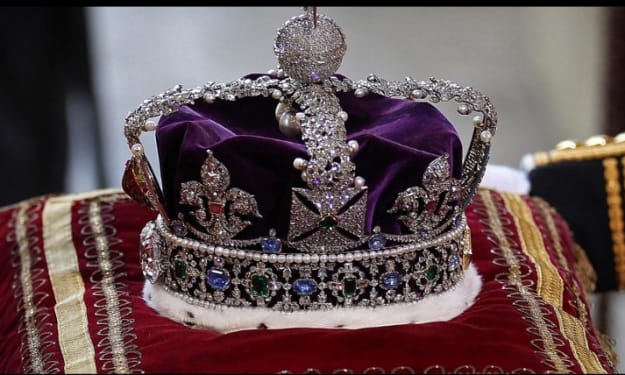The Starving Times
Colonial Americans and Cannibalism

Life in Jamestown, Virginia, during colonial times wasn’t easy. Many new residents, more accustomed to town living, found themselves struggling to survive in the unforgiving wilderness.
The brutally harsh winter of 1609-1610 became known as the “The Starving Time” for settlers in Jamestown. Many of the original inhabitants eventually turned to cannibalism to survive. Desperation forced Jamestown residents to do the unthinkable — dismember and cannibalize a 14-year-old girl.
The teenager was brutally dismembered and buried in the basement of the Jamestown Fort. From examining her remains, archeologists concluded that the poor kid was eaten before her bones were thrown in the cellar with the remains of dead horses, dogs, and other animals.
I wonder what Gordon Ramsay would say
“The chops to the forehead are very tentative, very incomplete,” said Douglas Owsley, the forensic anthropologist from the Smithsonian who analyzed the remains. “Then, the body was turned over, and there were four strikes to the back of the head, one of which was the strongest and split the skull in half. A penetrating wound was then made to the left temple, probably by a single-sided knife, which was used to pry open the head and remove the brain.”
Gross.
Little is known about the circumstances that led to breaking one of society’s most deeply ingrained taboos. Who was the girl researchers call “Jane?” Was she murdered, or did she die of natural causes? How many people participated? Or was it someone acting alone?
Despite the lack of details, researchers had the first conclusive evidence that cannibalism occurred in Jamestown. Archeologists excavating the site concluded that the bones were chopped up in a manner that confirmed the body was consumed as food. Historians have long speculated that the conditions faced by the colonists of Jamestown might have made them desperate enough to eat other humans—and maybe even commit murder in the process.
Perhaps England really wasn’t that bad
The Jamestown colony was founded in 1607 by 104 settlers who arrived aboard three ships, the Susan Constant, Discovery, and Godspeed, but only 38 survived the first nine months in Jamestown. Most succumbed to starvation and disease.
Because of difficulties in growing crops—they arrived in the midst of one of the worst regional droughts in centuries, and many settlers were unused to hard agricultural labor—the survivors remained dependent on supplies brought by subsequent missions, and trade with Native Americans. By the winter of 1609, extreme drought, hostile relations with members of the local Powhatan Confederacy, and the fact that a supply ship was lost at sea put the colonists in a desperate position.

In 1625, George Percy, president of Jamestown during the Starving Time, described the colonists’ diet, or lack thereof, during that terrible winter in a letter. “Haveinge fedd upon our horses and other beastes as longe as they Lasted, we weare gladd to make shifte with vermin as doggs Catts, Ratts and myce…as to eate Bootes shoes or any other leather,” he wrote. “And now famin beginneinge to Looke gastely and pale in every face, thatt notheinge was Spared to mainteyne Lyfe and to doe those things which seame incredible, as to digge upp deade corpes outt of graves and to eate them. And some have Licked upp the Bloode which hathe fallen from their weake fellowes.”
I really don’t care for this menu
Despite this and other contemporary references to cannibalism, there was never any conclusive physical evidence that it had happened. Then William Kelso, the chief archaeologist of the Jamestown Rediscovery Project, and his team discovered the young girl’s remains in the summer of 2012. “We found a deposit of refuse that contained butchered horse and dog bones. That was only done in times of extreme hunger. As we excavated, we found human teeth and then a partial human skull,” says Kelso.
Owsley performed forensic testing on the remains, including microscopic and isotope analysis. Using digital mirroring to fill in the gaps helped the team to create a 3D facial reconstruction despite having only 66 percent of the skull to work with. Along with other data, the researchers used this reconstruction to determine the remains belonged to a female around 14 years of age (based on the development of her molars)who was of British ancestry. Owsley says the cut marks on the jaw, face, and forehead of the skull, along with those on the shinbone, are telltale signs of cannibalism.
“The clear intent was to remove the facial tissue and the brain for consumption. These people were in dire circumstances. So any flesh that was available would have been used,” says Owsley. “The person that was doing this was not experienced and did not know how to butcher an animal. Instead, we see hesitancy, trial, tentativeness, and a total lack of experience.”
First course: brains
It’s likely that Jane’s brain, cheek, tongue, and leg muscles were eaten. The brain was most likely eaten first because it decomposes so rapidly. There’s no evidence of murder, and Owsley suspects that this was a case where hungry colonists ate the only food at their disposal.
“I don’t think that they killed her, by any stretch,” Owsley said. “It’s just that they were so desperate, and so hard-pressed, that out of necessity this is what they resorted to.”
Remember that along with starving children in China before you waste food.

About the Creator
Kathy Copeland Padden
Political junkie, history buff, and music freak spending the End Times alternating betweencrankiness and bemusement. Come along! It's fun!
Reader insights
Nice work
Very well written. Keep up the good work!
Top insight
Expert insights and opinions
Arguments were carefully researched and presented






Comments
There are no comments for this story
Be the first to respond and start the conversation.